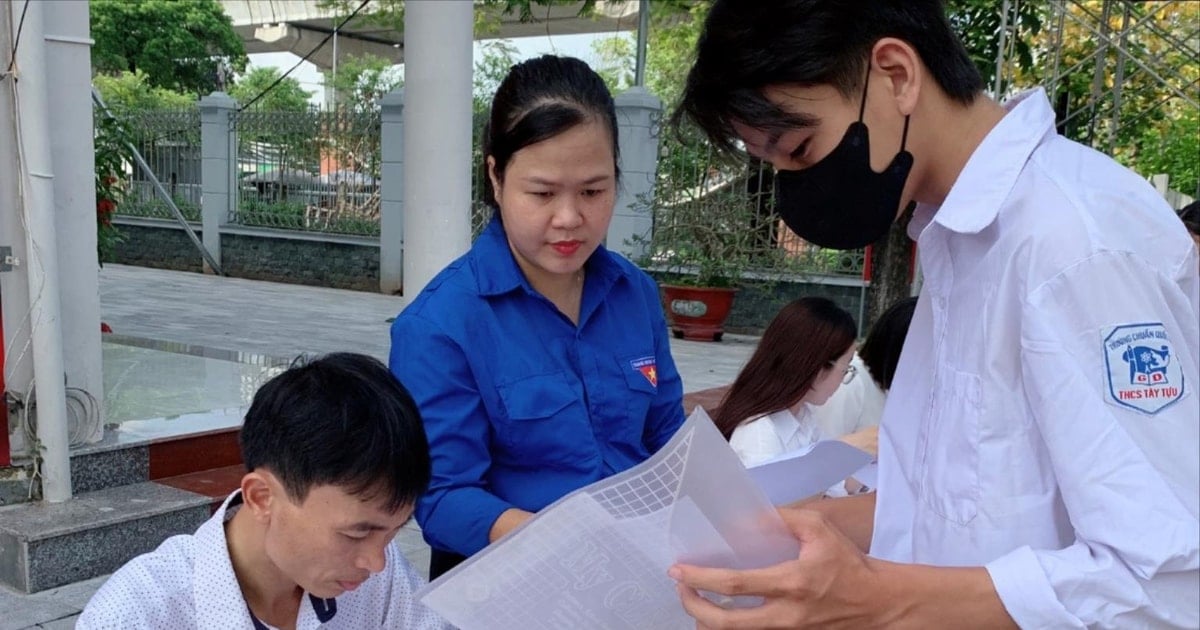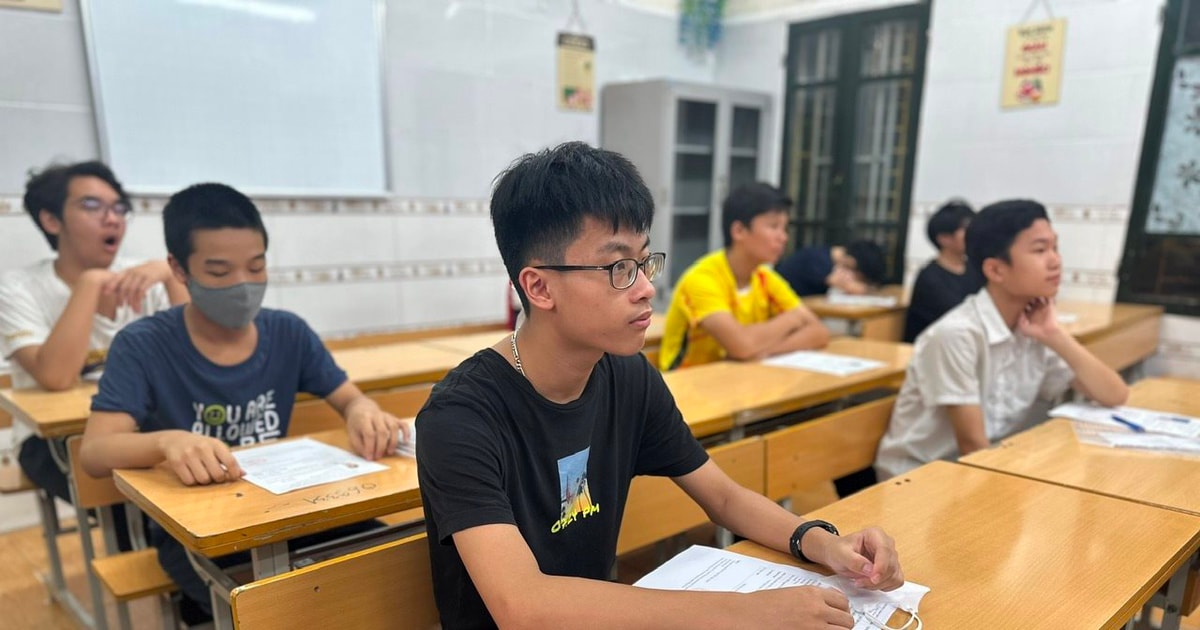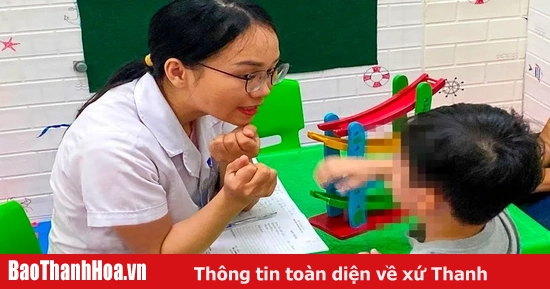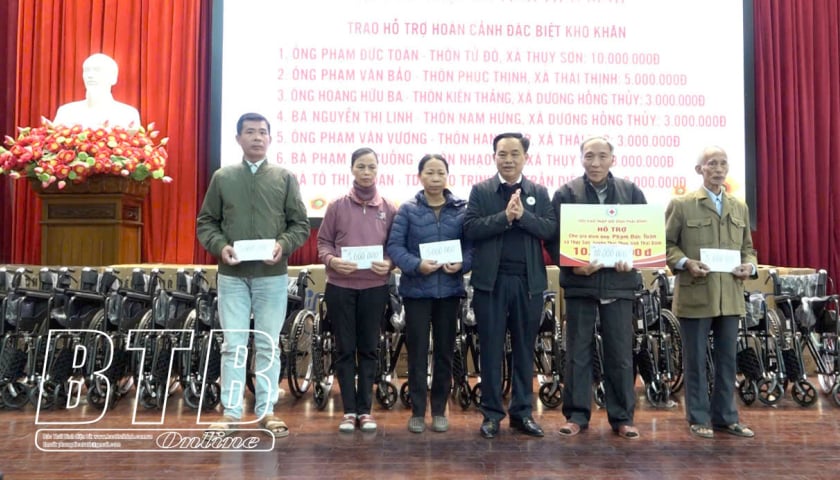From the structure and sample test of the competency assessment exam that Ho Chi Minh City National University has just announced, teachers provide guidance for students to be able to meet the knowledge and skill requirements of this exam.
REVIEW IN 3 STAGES
Teacher Tran Tuan Anh, Thu Duc High School (Thu Duc City, Ho Chi Minh City), said that the structure of the competency assessment test (CAP) consists of 120 questions, with Vietnamese, English, and mathematics accounting for the largest proportion of questions (with 30 questions in Vietnamese, 30 questions in English, and 30 questions in mathematics). Therefore, it is easy to see the advantage for students studying in the combination of math, literature, and English (accounting for 75% of the test score).

Grade 12 students have accessed sample exam questions for high school graduation exams, capacity assessments... to have a suitable exam review plan.
PHOTO: DAO NGOC THACH
Students who are oriented towards a combination of subjects from natural subjects seem to be at a disadvantage when the number of questions related to natural subjects (math, physics, chemistry, biology) accounts for 40 to 48 questions out of a total of 120 questions. In particular, math, which mainly requires understanding and is a common main subject of many different subject combinations, is not an obstacle for students in general (including students studying in social studies). Meanwhile, students studying in different subject combinations who are good at English are at an advantage.
Regarding the required content of the math section, Mr. Tuan Anh said that it contains most of the knowledge units from grade 10 to grade 12. However, the questions are mainly at the level of understanding and application; there are a few difficult questions. To achieve high scores in this section, students need to review most of the high school math content (quite extensive). However, they should only review the level of knowledge requiring understanding and application.
Teacher Tran Tuan Anh further instructed that to maximize exam scores, students should review carefully part 1 and part 2 of the exam because these 2 parts account for 50 questions. Review time should be divided into 3 stages: Stage one is to review knowledge, do easy exercises that you can do to remember the knowledge; stage two is to practice solving review questions; stage three is to review the parts and exercises that you have not done or have done wrong. Students need to practice reading comprehension skills, read quickly while still grasping the content and required questions. In addition, teachers also need to teach some more knowledge about logic and review knowledge about data analysis...
INTEGRATING MULTIPLE INTEGRATED KNOWLEDGE
As for Mr. Tran Van Toan, former head of the math group at Marie Curie High School (District 3, Ho Chi Minh City), statistics in the illustration test, from questions 61 - 90 require pure mathematical knowledge spread across the 3 grade levels. From questions 91 - 120 are related to scientific thinking, data analysis, logic and applied natural science problems. Integrating many interdisciplinary knowledge of physics, chemistry, biology, economics and social knowledge.
Therefore, according to Mr. Toan, to have the best preparation for this type of exam, teachers and students should review all the basic knowledge of the high school program to solve the first 30 questions in the shortest time possible. In addition to mathematical knowledge, it is necessary to integrate many interdisciplinary knowledge, clearly understand the laws of physics, chemistry, biology and issues related to economics, society, etc. Enhance the skills of reading questions, reading tables, reading graphs to accurately answer questions in the form of data analysis.
HARMONIOUS LEARNING OF ALL HIGH SCHOOL SUBJECTS
Also from the information announced about the 2025 National High School Exam of Ho Chi Minh City National University, Mr. Pham Le Thanh, Nguyen Hien High School (District 11, Ho Chi Minh City), noted that students must study all high school subjects in harmony, equip themselves with reading comprehension and logical thinking skills, be sensitive to current issues, science, and practical life through the habit of analyzing scientific, technological, and social issues through documents and practical exercises when studying. The questions no longer only require memorization of knowledge but also need to be applied in practice.

Candidates participating in the 2024 Ho Chi Minh City National University's competency assessment exam
According to Mr. Thanh, the logical thinking sections in the exam require students to have reasoning and analytical skills. Students should practice through puzzles, reasoning questions, and activities that develop logical intelligence. Enhance autonomy and self-study, self-research in many fields such as technology, economics and society to build a diverse background of knowledge. Students need to practice to manage their time effectively, ensuring completion of all parts of the exam.
"It is important that both teachers and students are flexible in updating and applying effective learning methods to ensure good adaptation to the new requirements of the National High School Graduation Exam from 2025. Instead of just teaching theory, teachers need to direct students to activities that develop logical thinking. Strengthen the teaching of reading comprehension and language skills because the language section of the exam will have more questions. Prepare test questions according to international standards so that students are familiar with the question types and the level of differentiation of the exam," said Mr. Pham Le Thanh.
As one of the schools where almost 100% of students have participated in the National University of Ho Chi Minh City's National High School exam for many years, Mr. Huynh Thanh Phu, Principal of Bui Thi Xuan High School (District 1, Ho Chi Minh City), said that the school will plan to prepare for students. First, the professional team will meet so that teachers can carefully analyze the new exam structure, then share information about the new exam structure with students and parents, helping them understand the content that needs to be prepared. Based on the exam structure, teachers will adjust the teaching program accordingly.
Mr. Phu also said that there will be plans to invite experts or teachers with experience in the National High School Exam to share and guide students. Focus on practicing thinking skills, problem solving, and quick reading comprehension, because these are important parts of the National High School Exam.
The new competency assessment test makes students feel unfair?
Worrying about fairness but not losing motivation is the common feeling of many candidates after Ho Chi Minh City National University announced the new structure of the 2025 National High School Graduation Exam.
Pham Minh Dung, a 12th grade student at Phan Boi Chau High School (Gia Lai), commented that the new structure of the National High School Exam gives students in Group D a "big advantage", because all three parts of the exam, math, Vietnamese, and English, have increased the number of questions, accounting for a total of 3/4 of the exam content (90 out of 120 questions). Not to mention, questions about logical thinking and data analysis are also related to math.
In addition, according to Dung, the new structure is more favorable for students who are inclined towards social sciences. However, Dung also said that the change in structure does not affect him too much because he has chosen to study all the subjects since the beginning of this summer.
On the other hand, Nguyen Van Chinh, a freelance PhD student at a private university in Ho Chi Minh City, said that the new DL exam is disadvantageous for many freelance PhD students. For example, in chemistry, the new DL exam lists the names of substances in English, forcing him to learn them all from the beginning. Or in Vietnamese, Chinh is not used to the questions pointing out works outside of the textbook and requiring analysis.
"However, I see a positive point that the science questions are easier and not as difficult as before," Chinh analyzed.
Nguyen Hoang Gia Bao, a 12th grade student at Thanh Da High School (HCMC), said that although he chose to study the combination of math - chemistry - biology, Bao was not worried about the new structure of the DGNL exam, because he always studied widely and set his study goals early, right after finishing 11th grade.
Not too worried about the new structure, Dong Minh Khanh, a 12th grade student at Nguyen Thi Minh Khai High School (HCMC), said that the increase in the number of questions in the language and math sections along with the exam covering all 11 subjects was "shocking but not surprising" because he had predicted this in advance. "I think the new structure is quite reasonable because the purpose of the exam is to comprehensively assess the problem-solving and thinking ability of the learner. Therefore, if choosing a combination, it will cause an imbalance in test scores and make it difficult to apply for university because it is no different from the high school graduation exam, causing pressure on candidates to choose elective subjects," Khanh commented.
Ngoc Long
Source: https://thanhnien.vn/dinh-huong-on-tap-tu-de-thi-danh-gia-nang-luc-dh-quoc-gia-tphcm-185241114223908138.htm


![[Photo] Prime Minister Pham Minh Chinh meets with King Philippe of Belgium](https://vstatic.vietnam.vn/vietnam/resource/IMAGE/2025/4/1/be2f9ad3b17843b9b8f8dee6f2d227e7)

![[Photo] Close-up of Vietnam's sniffer dog team searching for earthquake victims in Myanmar](https://vstatic.vietnam.vn/vietnam/resource/IMAGE/2025/4/1/d4949a0510ba40af93a15359b5450df2)

![[Photo] General Secretary To Lam receives King Philippe of Belgium](https://vstatic.vietnam.vn/vietnam/resource/IMAGE/2025/4/1/e5963137a0c9428dabb93bdb34b86d7c)
![[Photo] President Luong Cuong and King Philippe of Belgium visit Thang Long Imperial Citadel](https://vstatic.vietnam.vn/vietnam/resource/IMAGE/2025/4/1/cb080a6652f84a1291edc3d2ee50f631)

























































































Comment (0)